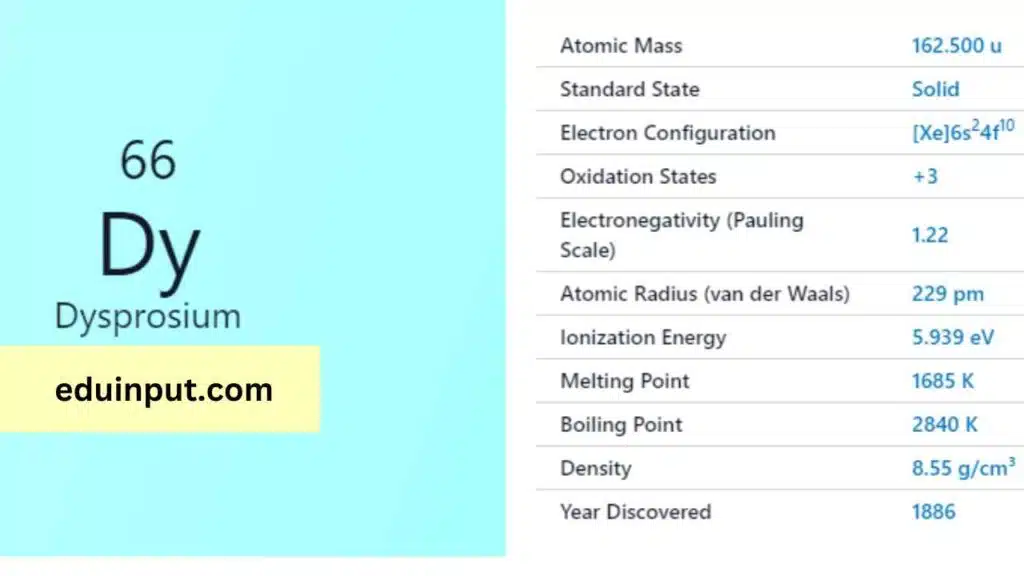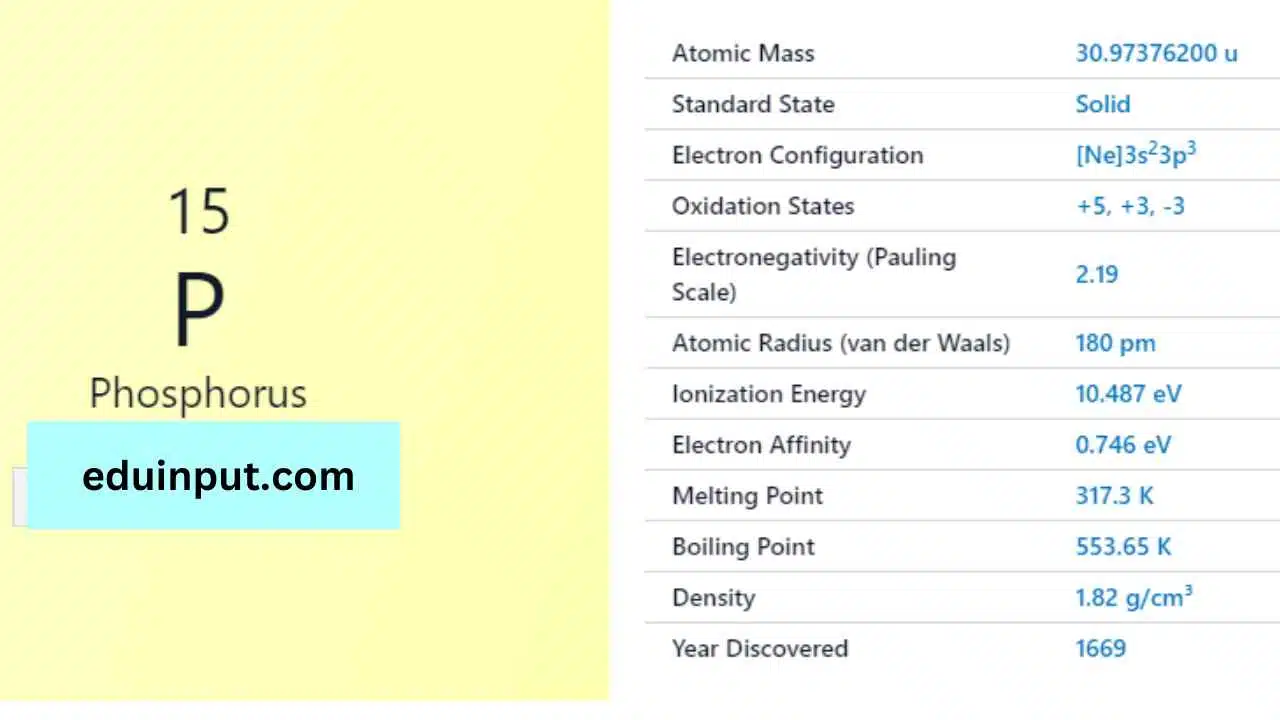Dysprosium-Discovery, Properties, And Application
Dysprosium was first discovered by Paul Émile Lecoq de Boisbaudran, a French chemist, in 1886. Its name comes from the Greek word “dysprositos,” meaning “hard to get,” which refers to its scarcity and the difficulty in separating it from other rare earth elements. Dysprosium has several isotopes, but only one of them, Dy-164, is stable.

| Property | Value |
| Name | Dysprosium |
| Symbol | Dy |
| Atomic number | 66 |
| Relative atomic mass (Ar) | Group in the periodic table |
| Standard state | Solid at 298 K |
| Appearance | Silvery white |
| Classification | Metallic |
| Block in the periodic table | |
| Group name | Lanthanoid |
| Period in periodic table | 6 (lanthanoid) |
| Period in the periodic table | f |
| Shell structure | 2.8.18.28.8.2 |
| CAS Registry | 7429-91-6 |
Discovery
Dysprosium was discovered in 1886 by Lecoq de Boisbaudran, who isolated it from a sample of holmium oxide. However, its existence had been predicted by Russian chemist Dmitri Mendeleev in his periodic table, which he published in 1869.
Physical Properties
Dysprosium is a soft, silvery-white metal that tarnishes quickly in air. It has a relatively low melting point of 1412°C and a boiling point of 2567°C. Dysprosium is paramagnetic, which means it is weakly attracted to magnetic fields. It is also a good conductor of electricity and heat.
Chemical Properties
Dysprosium is a reactive metal that slowly reacts with oxygen, water, and acids. It forms a protective oxide layer on its surface when exposed to air, which makes it resistant to further corrosion. Dysprosium is also known for its strong magnetic properties, which make it useful in the production of magnets.
Applications
Dysprosium has a wide range of applications due to its unique properties. It is commonly used in the production of powerful magnets, such as those used in electric motors, wind turbines, and hard disk drives. Dysprosium is also used in the manufacture of lighting and display technologies, including high-intensity discharge lamps and plasma TVs. It is also used as a neutron absorber in nuclear reactors.
Interesting Facts
- Dysprosium is one of the rarest elements on Earth, with an abundance of only 5.2 ppm in the Earth’s crust.
- Dysprosium is used in the production of lasers that can be used for medical purposes, including the treatment of skin conditions and the removal of tattoos.
- Dysprosium is a key component in the production of neodymium-doped fiber amplifiers, which are used in fiber-optic communication systems.
- Dysprosium is also used in the production of nuclear batteries, which can provide power to remote or inaccessible locations.
Dysprosium is a rare and valuable element that has a wide range of applications in modern technology. Its unique magnetic and chemical properties make it an essential component in the production of powerful magnets, lighting and display technologies, and nuclear reactors. Despite its relative scarcity, dysprosium continues to play an important role in the development of new technologies and the advancement of science.







Leave a Reply